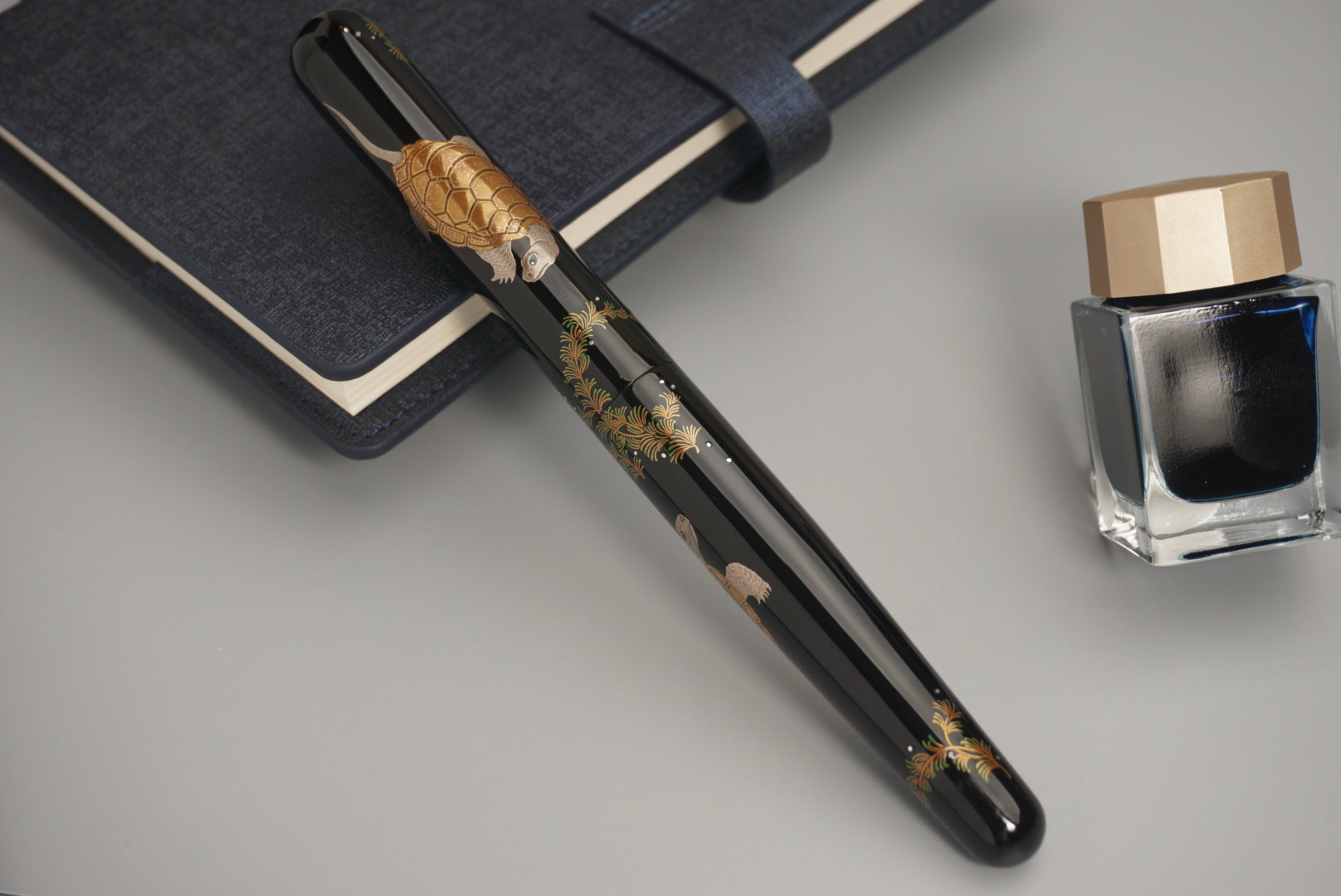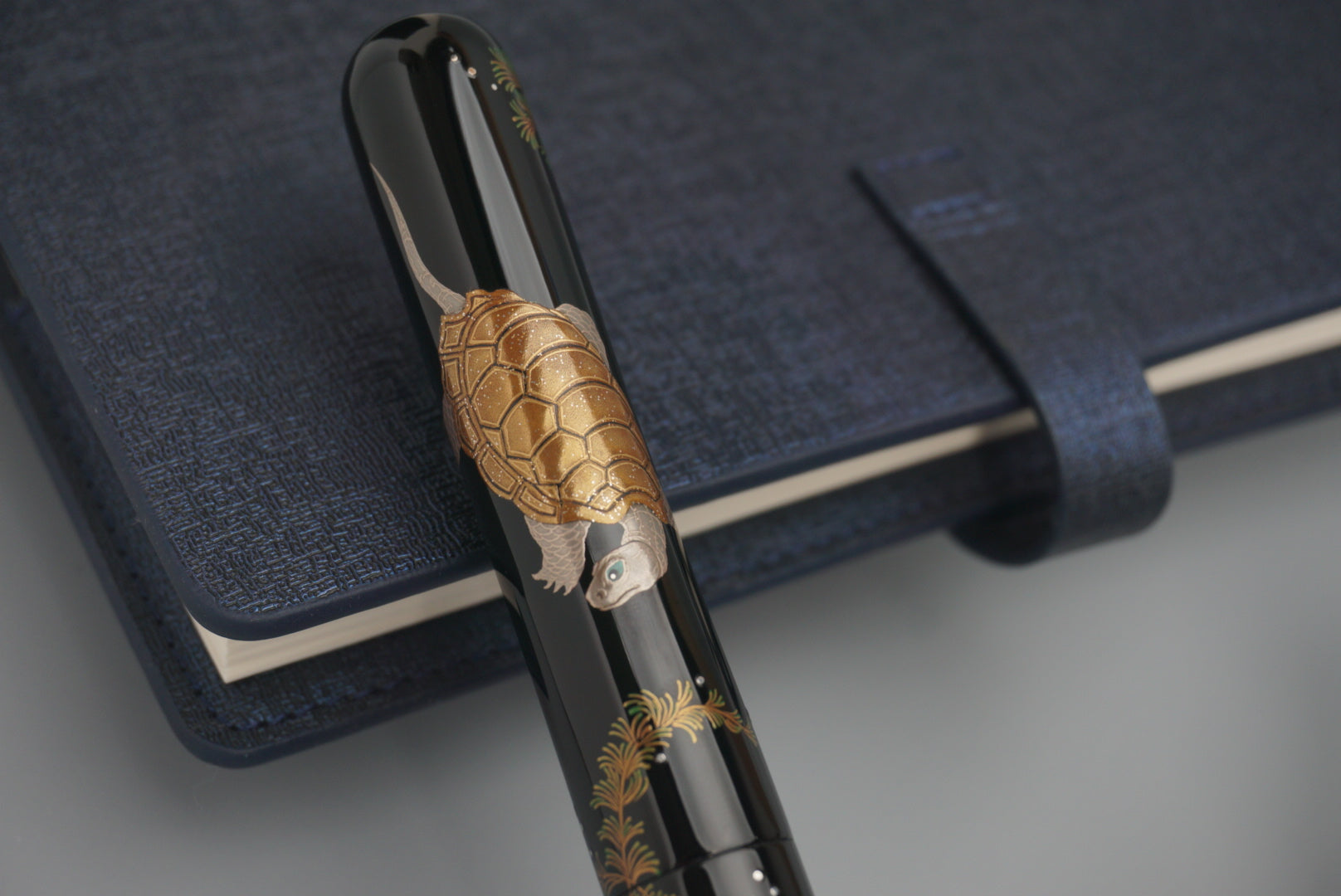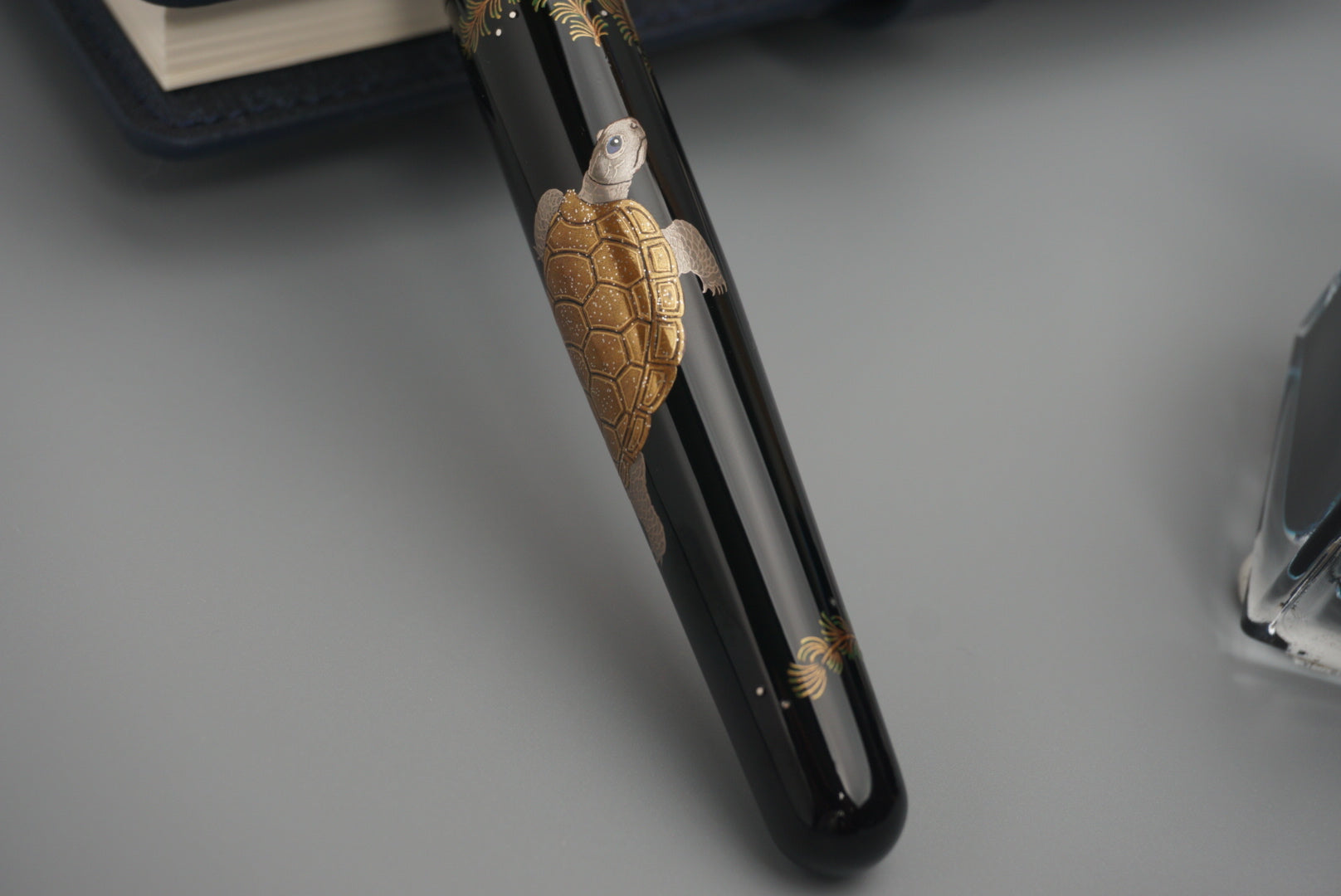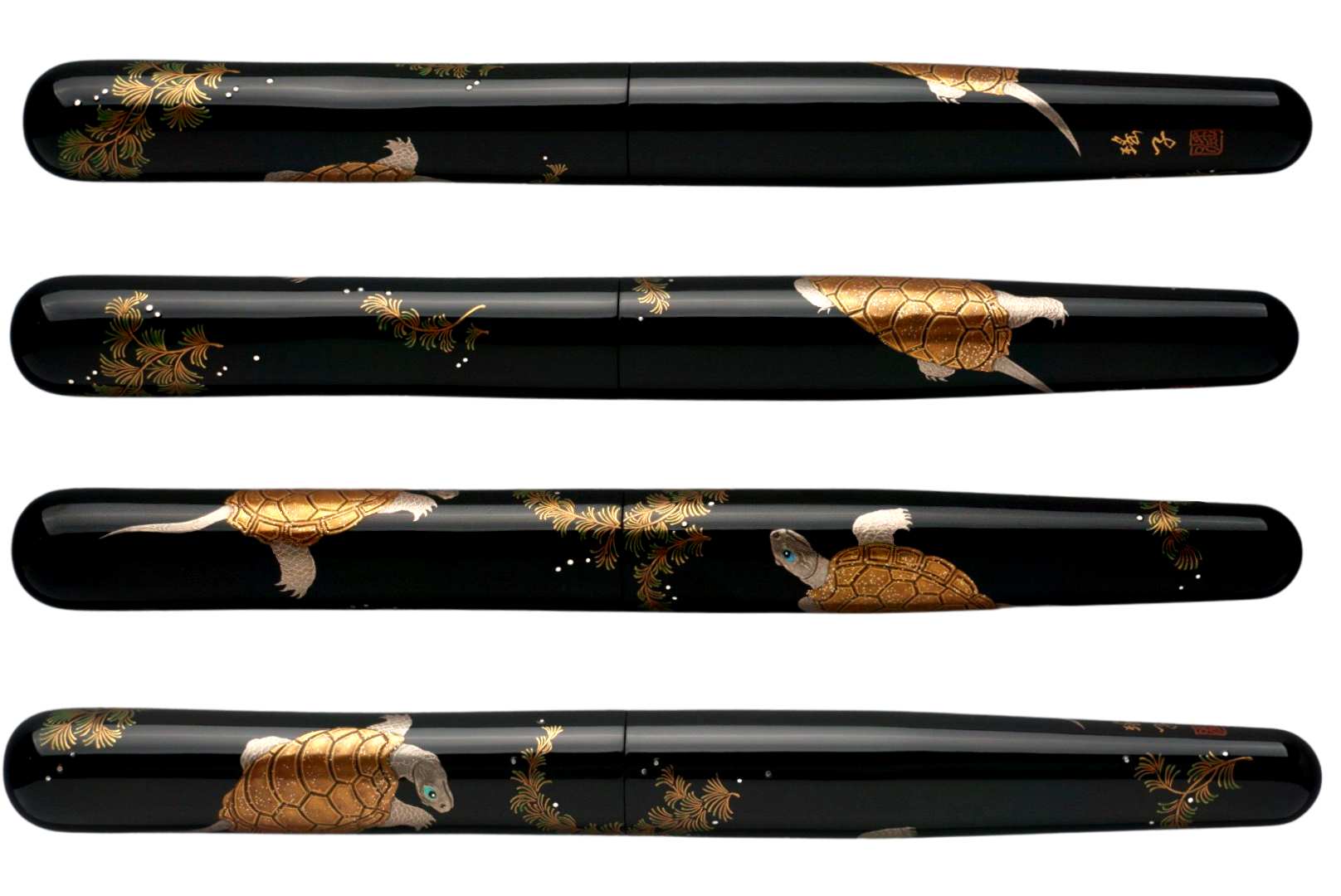ShiZen Two Swimming Turtles on Ranga M5 Fountain Pen
Starting at $885/mo for 6 month no-interest installments, 10% down using 
Learn about our Payment Relief Plan. |
|---|
Couldn't load pickup availability
**We are out of stock on this pen. This product is eligible for pre-order with an estimated production lead time of 5-6 months. Placing an order on this pen will initiate a pre-order. A UrushiPen representative will reach out to you upon placement of order to confirm latest lead times. 50% Deposit/50% at-Shipment payment term option is also available. See Pre-Order Terms and Conditions for details. Contact us today for assistance.**
✓ 100% Genuine Urushi
✓ Contains the Maki-E Red Seal (Highest Quality of Maki-E Art)
✓ Hand-painted by highly-trained Japanese Artisans
Inspired by Kitagawa Utamaro "Two Turtles Swimming", Yoko-san delivers a stunning rendition with taka-makie (raised design) employed on the turtle shell and face to emphasize the contours, hira-makie (flat design) on the limbs and aquatic plants, and okihirame on the 3-dimensional bubbles. A smooth black background accentuates the focus on the turtles swimming gracefully looking at each other. Whether they are family or friends or complete strangers, Yoko-san leaves it to the beholder's imagination.
It is not clear the species of turtles Utamaro painted in his ukiyo-e (Japanese woodblock painting) work. Yoko-san believes he had intended to draw Japanese pond turtles which are endemic to Japan, therefore, illustrating some of their key features of yellow-toned shells and dark limbs. The face and limbs are made of silver powder and black urushi with the intent that as the artwork ages, one can enjoy the darkening change of color to become even more like a real Japanese pond turtle.
About Ranga M5 Pen Body and Filling System:
This pen was produced in partnership with Ranga Pens. Urushi lacquer is applied over a solidly constructed handmade Ranga model 5 ebonite pen body, including the threads.
Pen comes with an international pen converter but pen barrel chamber can also be filled eye dropper style (eye dropper does not come with pen).
Nib Details:

This pen is furnished with a ShiZen 18k Gold, two-toned #6 nib, medium tip (currently ShiZen only offers one size: Medium)
The logo depicts an enso circle around a bonsai tree. Both of these illustrations have connections to Zen Buddhism. Enso circle represents a tranquil meditative state where one's mind is able to be emptied so that they can exercise immense creativity. Bonsai trees are commonly grown in Japan as they are perceived as living things that require discipline to care for them -- they also serve as harmony between nature and human-beings.
Technical Specification:
| Cap Length | 84 mm (3.31") |
| Cap Diameter | 17 mm (0.67") |
| Section Diameter | 12.5 mm (0.49") |
| Barrel Length | 126 mm (4.96") |
| Barrel Diameter | 17 mm (0.67") |
| Pen Length (Closed) | 177.8 mm (7") |
| Pen Length (Posted) | Do not post cap |
| Weight | 39 g (1.38 oz) |
| Weight (w/ink) | 40 g (1.41 oz) |
| Filling System | Cartridge/Converter/Eyedropper |
About the Artisan:

Maki-e artisan Yoko Sakata lacquered this pen. Born in 1985 in Miyagi prefecture, Yoko had an innate appreciation of Japanese traditional culture and enjoyed folk songs and tea ceremony. She knew from a young age she wanted to do something that would revolve around Japanese traditional culture which led her to pursue maki-e. She moved to Kyoto and studied at a vocational school followed by graduate school. Subsequently she became a disciple of Yutaro Shimode, a graduate school professor and one of Japan's leading maki-e artisans who was known for restoring maki-e at a very prestigious shrine Ise Jingu and made lacquered products for the emperor and his wife as well as state guests. She worked at Yutaro's lacquer workshop for 9 years. She also has taught maki-e at a vocational school in Kyoto and continues to holds workshops on lacquering maki-e and raden every year. She has lacquered various objects such as tea ceremony utensils, sword scabbards, and Buddha decorations (which she enjoys very much). She has won exhibitions sponsored by Japan Kogei Association, the largest tradiation craft organization in Japan backed by the Imperial Household Agency as well as the Japanese Traditional Crafts (Wester Region) Exhibition). In addition, she has won an award almost every year in the Kyoto Craftsman Competition for the making of Buddhist altars.












